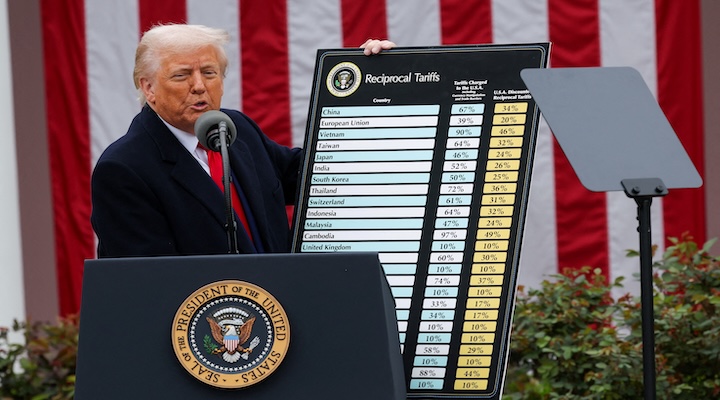Already facing complex economic pressures, locally and globally, Australian retailers are set to be further challenged by the new tariffs announced by the US government on April 2. The Trump administration announced a baseline tariff of 10 per cent on almost all imported goods to the US, with some countries and products facing much higher tariffs as part of a ‘reciprocal tariff’ policy. Goods from Australia will incur a 10 per cent tariff at the US border, with beef and iron ore exporters ex
ers expected to be most impacted by the policy change.
“It remains too early to make clear predictions around the flow-on effects for Australian retailers,” Australian Retailers Association (ARA) chief industry affairs spokesperson, Fleur Brown, told Inside Retail.
“However, we are closely assessing the evolving tariff situation and its impact on our members in terms of both risks and potential opportunities,” she continued.
The ARA isn’t prepared to make predictions about the direct and indirect effects of Trump’s sweeping tariffs, but the 20 per cent plunge in online luxury fashion retailer Cettire’s share price on Thursday, April 3, suggests that the ramifications are already being felt at home.
The retail industry has beef, too
While the ‘meat trade war’ is only just kicking off, the ‘Liberation Day’ tariffs threaten the broader Australian retail industry with higher operating costs, increased customs delays and unexpected customer fees.
Regardless of where they are based, brands exporting directly out of China and Vietnam, the two biggest apparel exporters to the US, will now be subject to those countries’ respective 54 per cent and 46 per cent tariffs.
“Retailers selling into the US or relying on international suppliers are facing tough decisions,” Rob Hango-Zada, CEO and co-founder of multi-carrier shipping platform Shippit, said in a statement.
“Higher duties on Chinese-manufactured goods are driving up costs across the board, forcing businesses to either absorb the hit or pass it on to consumers,” he added.
“With Australian shoppers already stretched thin, higher prices on essentials, electronics and homewares could further erode consumer confidence.”
In addition to the tariffs, Trump ordered the removal of the de minimis threshold, a loophole that previously allowed low-value goods (under US$800) to enter the US without incurring duties or taxes, threatening e-commerce growth and cross-border trade.
Cettire’s stock dive reflects the complex new reality for retailers with global suppliers and customers. According to the company, approximately 41 per cent of its total gross sales in the first half of FY25 were European Union-manufactured goods sold to US customers.
Cettire’s average order value in 1H FY25 was US$514, within the previous de minimis loophole. However, these orders are now subject to the 20 per cent US tariff on imports from European Union countries.
The decimation of the mid-tier brands
As with any major disruption to the status quo, some businesses stand to gain and some stand to lose under Trump’s new tariffs policy.
“The retailers hit hardest by the new US tariffs will be small to mid-sized e-commerce businesses that sell goods valued under US$800, as the closure of the de minimis exception removes their previous tariff-free access to the US market,” Lyn Nguyen, founder and director of Auvie Consultants, told Inside Retail.
“For many, this shift could render the US an unprofitable market to operate in,” she added.
“Australian exporters across all categories, especially those manufacturing in China and shipping to the US or those utilising China warehouses, will also face steep cost increases, with tariffs now rising to as high as 54 per cent.”
On the flip side, however, Australian brands positioned on the premium end of the market could flourish in this new environment.
“To the extent that [brands] are able to position themselves in that premium product range, they’ve clearly got more options,” Robert Brooks, a professor of econometrics and business statistics at Monash Business School, told Inside Retail.
“When you’re out of that premium segment, it is potentially more difficult because you have less brand leverage in your positioning.”
Of course, even premium-priced and positioned Australian goods will still be exposed to Trump’s tariffs – but consumers might be more receptive to the high price point.
“Across the board, retailers will face a choice; absorb the added costs or pass them on to US consumers, both of which could lead to reduced competitiveness and shrinking US sales,” concluded Nguyen.

